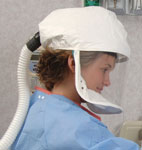 |
 |
| MSDS Topics |
Free Sites | FAQ's | Regulations | Glossary | Software | Suppliers |
| Books | Forum | Poll | Fun stuff | Quiz | Store | |
| MSDS and safety supplies | Search ALL our MSDS info | |||||
 | |||
 |
 |
 |
|
| Title: 05/15/1997 - OSHA's regulations for chemicals used in the workplace, and in particular, glutaraldehyde. | |
| Record Type: Interpretation | Standard Number: 1910.1000; 1910.1200 |
May 15, 1997
[Name Withheld]
Dear [Name Withheld]:

Ensure that your MSDS collection is "readily accessible" with these handy compliance centers from Safety Emporium.
OSHA's Hazard Communication Standard (HCS), 29 CFR 1910.1200, is designed to ensure that employees are informed of the hazards associated with exposure to hazardous chemicals used in the workplace. Manufacturers evaluate the chemicals they produce and prepare a Material Safety Data Sheet (MSDS) to be used by "downstream" users of those products. The HCS requires that all employers (including those in the health care industry) develop a written HCS program and train employees on the hazards of the chemicals and methods to protect against exposure. If new or significant information regarding a potential hazard to a chemical is discovered, the employer is required to obtain an updated MSDS. Employees have a right to file a complaint with their local OSHA office if they believe their employer is not in compliance with OSHA standards. The complainant's name would be kept confidential if requested. You or your co-workers may choose this option if you have current information that your employer is not in compliance with the HCS.
Since 1988, OSHA has been working on a project to update the Permissible Exposure Limits (PELs) for air contaminants codified in 29 CFR 1910.1000, Tables Z-1, Z-2, and Z-3. This would lower the existing PELs for 212 toxic substances and add 164 new air contaminants to the current list of PELs. Glutaraldehyde is one of the new chemicals the agency plans to add to the air contaminants that OSHA regulates [ILPI says: see http://www.cdc.gov/niosh/topics/glutaraldehyde/ for more on glutaraldehyde]. The final rule for this project was vacated in 1992 by the Eleventh Circuit Court of Appeals. In summary, the Courts said that OSHA failed to show a significant risk and failed to show the new PELs were economically or technologically feasible. OSHA's intention is to move forward in addressing the Court's concerns by relying on a risk-based prioritization.

U.S. Department of Labor - OSHA
Gateway Building, Suite 2100
3535 Market Street
Philadelphia, Pennsylvania 19104
Telephone: (215) 596-1201
Sincerely,
John B. Miles, Jr., Director
Directorate of Compliance Programs
The official, public domain, OSHA version of this document is available at http://www.osha.gov/pls/oshaweb/owadisp.show_document?p_table=INTERPRETATIONS&p_id=22408&p_text_version=FALSE